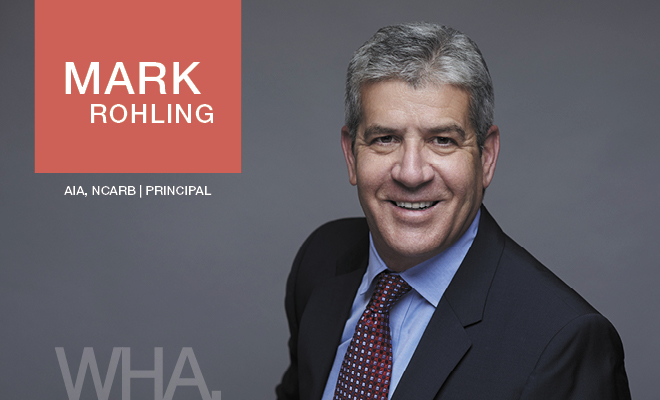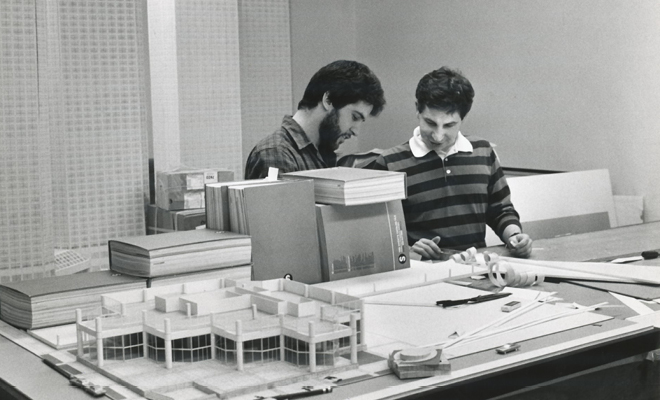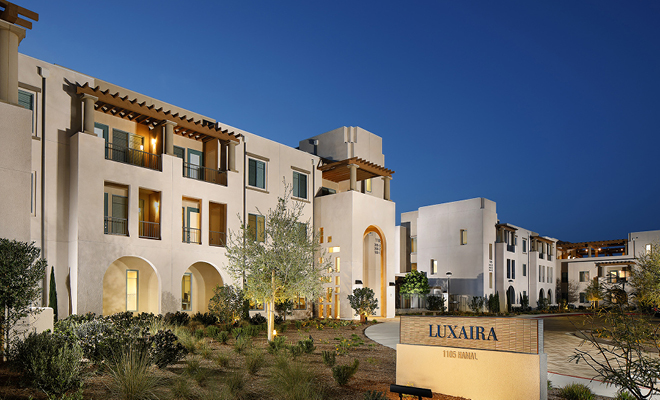Spotlight on Staff | Mark Rohling, Principal

Mark Rohling, Principal at WHA grew up knowing he had an eye for design. In elementary school, he remembers studying floor plans, appreciating the details and would find himself submerged in the real estate section of the Sunday newspaper. Join us as we learn more about Mark Rohling’s award-winning projects, his background and some advice for those who are interested in a career in architecture.
Tell us about your journey to becoming an architect.
In second grade my parents wanted to remodel our house; they hired an architect, Rodney Wright to do the design. This was when I saw plans for the first time. I became enamored with his drawings and started saving the Sunday paper real estate sections, trying to figure out floor plans based on the photos. That Christmas, my parents gave me a junior drafting kit. Come high school orientation, I enrolled in an upper-level drafting class as a freshman and was mixed in with juniors and seniors who thought they were hot shots. I got a lot of flak and had to toughen up quickly. At the end of the year, I won an award for best architectural design and my drafting teacher hired me to work at his little shop in Libertyville, Illinois. I worked for him nights and weekends through high school and over breaks through part of college. Prior to my junior year at the University of Illinois, I began working for another architect in Lake Forest doing merchant housing and custom homes until a year after graduation. Then, I moved to Oak Park and worked for high-rise residential design firms in downtown Chicago for about five years.

Congratulations on Luxaira winning the 2018 Gold Nugget Award for Best Affordable Senior Housing Community! Tell us about it.
Thank you. Luxaira, for Related California, was an exciting project to be a part of. Although these are affordable apartments, it was important to really push for the amenities. I felt the rooftop decks would be a great addition and enhance the streetscape. It was fun working out the common areas (lounge, library, demo kitchen, quilting room, and painting room) to make the buildings more cohesive and create better flow, keeping adjacencies in mind. For example, we located laundry rooms near roof decks so residents can enjoy the outdoors and connect with neighbors while waiting for their wash. Because senior housing facilities can feel very institutional, we steered away from that and created a more hospitality-oriented solution.

What challenges did you face over the course of the project?
We inherited this project at a very preliminary stage without much information to work from and a need to jump right into the design development and construction document phases simultaneously. This meant we had to design during the development of the construction drawings, constantly updating them as the design evolved.

How do you see the future of senior housing in California?
The market for senior housing is growing like crazy. Luxaira just opened and all 157 units are already rented with a five-year waiting list. There’s a high demand; it seems we can’t build them fast enough. It’s really important to create stimulating, interactive communities for these types of projects.

What do you do in your free time?
I’ve been very active throughout my life and enjoy a good workout – l cycle, sail, and ski. Having grown up on a Midwestern lake, I have a continuing desire to be near water and have swum with U.S. Masters Swimming since the age of 22. Reading the daily newspaper, journals, and books are also favorite pastimes. A year of studies in France generated my interest in international issues; The Economist and Foreign Affairs magazines keep me informed. When necessary, they can also be read for their tranquilizing effects.
Do you have anything to say to young people who are interested in architecture and want to join this industry?
Always be conscious of the built environment; observe what you like and don’t like. Look for organization and disorganization; learn to appreciate both, discerning when one should take precedence over the other. Notice your surroundings and ask yourself, “was this intentional or unintentional?” Appreciate details. Look at architectural journals – I love Architectural Record. Get inspired! Learn to work with teams and leave your ego at home. There are many books I recommend, but Stephen R. Covey’s The 7 Habits of Highly Effective People is a must.




Leave a Reply